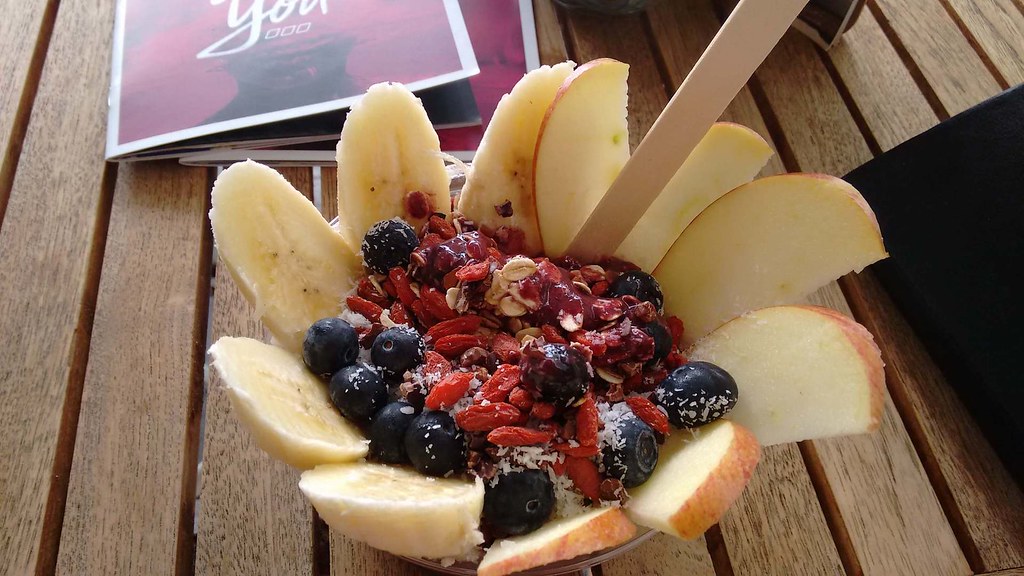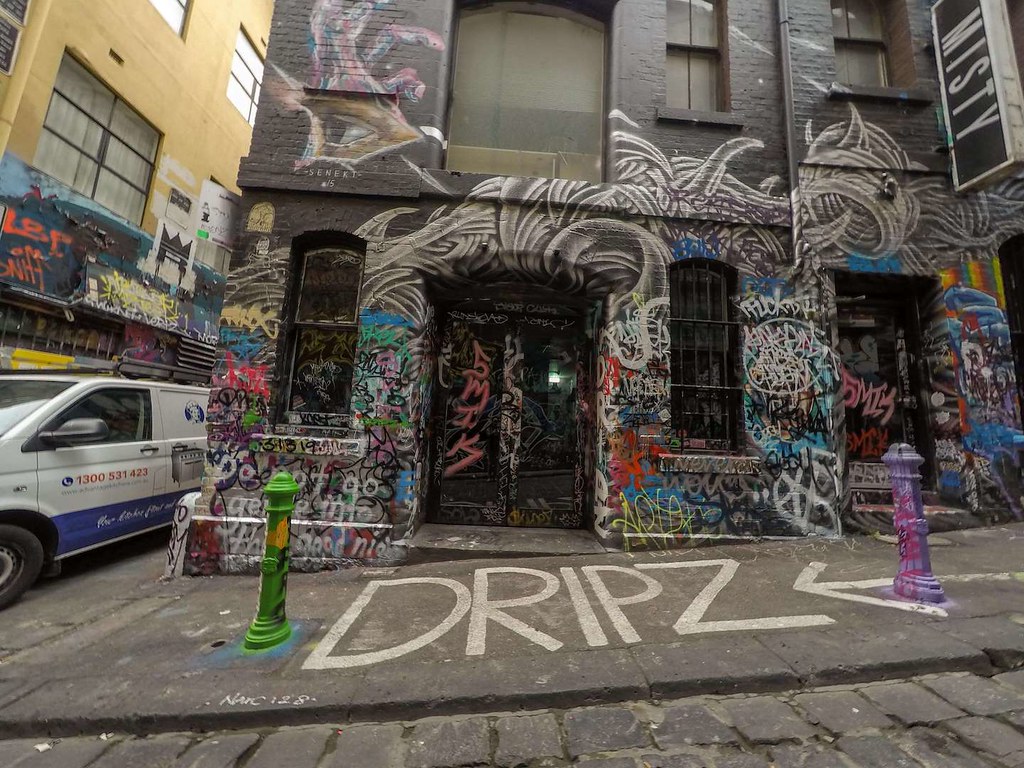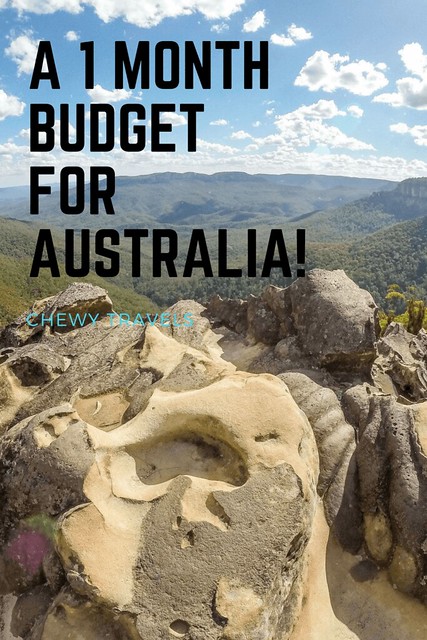An ‘I love summer’ budget for a month in Australia
Australia, the land down under, the outback, Oz.
It’s a wonderful place.
But it can break your bank if you aren’t careful.
I escaped winter in the North and spent all of December 2016, and a week in February 2017, in Australia. I had 5 weeks total of glorious summer there and here’s the breakdown of the money I spent.

What’s up down under
What’s so great about Australia, you say? Sure, it is far from everywhere. But there are lots of things to love about it!
Here are some reasons why you should go to Australia.
Beautiful scenery
Stunning sunrises, watery heaven, and scenic cityscapes. What more could I ask for?
Great food

A delicious smoothie bowl!
You’ll find some of the best Asian food outside of Asia in Australia. In addition to that, there’s always great vegetarian, vegan, earth-conscious fare to be had.
Chillest vibes on earth
It’s so darn chill there. It’ll start to rub off on you, and that’s a good thing.
Cool art and culture
Street art is meant to be current, poignant, and transient. You’ll find plenty of it in Melbourne!

Another reason to go is that much of Australia seems to have the perfect summer weather. The weather in Melbourne can change several times within a day, but overall I felt it was amazing most of the time. I had rainy days in Sydney in December, but I did get one lucky day of sunshine. The furthest north I went was Brisbane, and even there it wasn’t that hot (at least for the time I was there in February!). None of the places I went to were very humid, which was a welcome relief in February after spending more than a month in Asia!
Cost of things in Australia
Australia can be pretty expensive, especially if you are comparing to prices in Asia. But, you shouldn’t do that because you’ll just get sad. Besides, it’s a different place, and you are indirectly paying for that too. You can budget for Australia and hit all the major activities you want if you approach it with a strategy.
A bed in a dorm in a hostel will cost around 25 AUD (19 USD at the time of writing). A meal out might cost around 15 AUD (11.44 USD) but can cost up to 20 or more AUD (lunch may be cheaper than dinner). In fancier places, it can get up to 30 or 40 AUD. A coffee will put you back about 4 AUD.
Most of the hostels I stayed at in Australia were pretty great. You can tell which ones are the party hostels and which ones are the quiet ones. I usually prefer the quiet ones (aka I’m old!).
A big mistake was when I was in Coolangatta and stayed at the Komune Resort. The female dorm room was on the second floor overlooking where the pool, bar and restaurant was, so you hear all the partying all night long. I also stayed there on Friday and Saturday nights, so that didn’t help either.
Another major expense is transportation within Australia once you get there. If you are short on time, you may need to book several internal flights. These can range in price depending on the distance. My two internal flights cost about 130 AUD (97 USD). It cost about 50 AUD from Melbourne to Sydney, and 80 AUD from Sydney to Adelaide.
Also, getting to islands in Australia can cost a pretty penny. For example, the round-trip bus and ferry to Kangaroo Island cost me 189 AUD (144 USD). Local public transportation in cities may cost about 20 AUD per week depending on how often you are moving around. Taking the public bus from the airport to town may save you some money.
My budget for a month in Australia and tips for planning your trip
I spent about 2 weeks in Melbourne, 4 days in Sydney, 7 days on Kangaroo Island, and 4 days in Adelaide. I was lucky in that I didn’t have to pay for accommodation for much of the time I spent in Australia in December. I was in Melbourne for a conference, so my accommodation was kindly paid for by a collaborator. Then I spent time with a fellow ultimate (Frisbee) player in Melbourne and then a friend in Sydney. If that hadn’t been the case, I probably would have stayed in hostels the whole time.
Here’s my approximate expense breakdown (not including flight into Australia):
![]()
I didn’t do a great job of keeping track of the cash that I spent, so much of that goes into the Miscellaneous line (the last category). Most of that category is gifts, SIM card, and food paid with cash.
Here’s my expense breakdown if I had to pay for accommodation for the whole time:
![]()
My monthly budget for Australia comes out to about 2100+ AUD (1600 USD). If you want the average budget for a week in Australia, it was about 550 AUD or 400 USD. This is with a budget of 25 AUD per night for accommodation.
I wish I had more time to travel slowly overland, but maybe next time. I also didn’t do a few activities that had been on my mind, like diving, paddle boarding, or surfing lessons (70 AUD). I did mostly free activities like watching sunrises and sunsets, and ate a lot of yummy food. On my next trip (because there will be a next trip), I’ll make water sports more of a priority!

Tips for planning and budgeting a trip to Australia
1. Budget out what activities you want to do in each location.
Get to know your destinations ahead of time to get an idea of approximately what you’ll be doing in each place. Is there an exhibition going on that you have to see? Or a killer restaurant that has rave reviews? Make a shortlist for each place, with the amount you’d spend next to it. Add them up and you have a first shot at a Food or Activities budget for each location.
2. Keep track of your expenses as you go.
This one is a no brainer. If you aren’t tracking how you are spending your money, you will be more likely to blow through your budget. If you aren’t good with numbers, draw a few columns on a piece of paper and add each expense to it by category. It doesn’t need to be exact, but you should try to keep an idea of how much money is going out. Using plastic and virtual money may give the illusion that you aren’t spending much, so keep track of those expenses too!
3. Designate a splurge item or category and set limits.
For me, that would probably be food. Because I have to travel with food intolerances, sometimes that means spending a little more on food. I don’t mind giving up a few dollars to have a healthy meal, and I particularly am an advocate for locally sourced foods. If I’m in a particularly expensive location, I may only eat out for one meal a day so that I can spend a little more on it.
4. Figure out what islands you want to visit and book your ferry tickets in advance.
When I was on Kangaroo Island, many of the ferries to and from Kangaroo Island were sold out. That may affect how long you can stay there if you don’t plan ahead. Or, if you are like one of my friends in Sydney, you won’t be able to make it to the island at all if you arrive without a spot booked. This is more important for people who need to take cars onto the ferry, but could also apply for people just bringing themselves as the boats may not have a large capacity.
Future trips to Australia?
This being my first time really experiencing and traveling Australia, I loved it and want to go back as soon as possible! Talking to my friends who are there, I’ve thought about whether I would enjoy living there. In particular, I quite liked Melbourne and could see myself spending chunks of time there. It’s so far away from my family, though, that I think for now it’s not on the table for the long term.
Australia brought out my outdoorsy side, and I like that. I know I’m a city girl at heart, but that doesn’t mean I can’t handle a bit of nature too. Planning this trip, I had really hoped to either get to go diving or surfing, but I did neither. I will have to really push myself to do these things next time I get the chance!!
Summer is about over in Australia now, but hopefully this info will help you get started on planning your trip to Australia. I myself am hoping to fly south for the winter again!
Are you going to Australia on a tight budget? What are you plans for when you get there?
Pin this for later!

